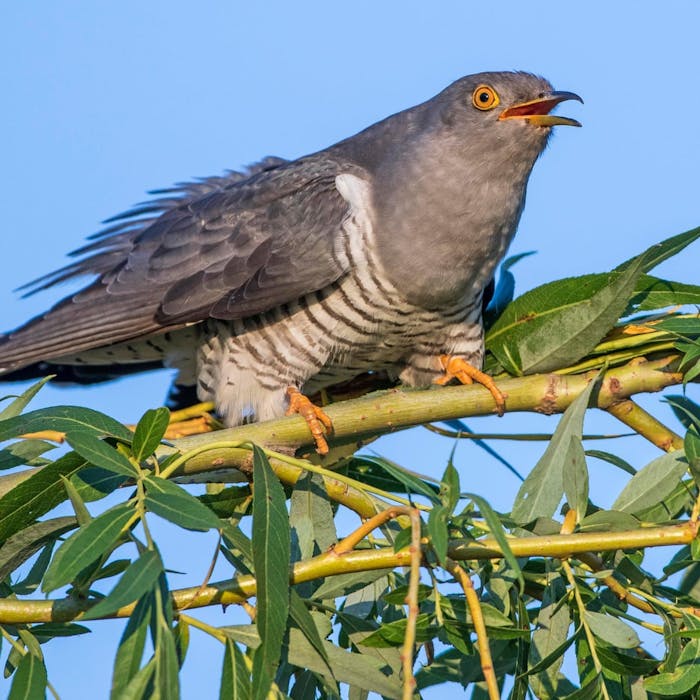
A cuckoo's comeback - PJ the frequent 10,000-mile migrating flyer
The arrival of the first cuckoos in Britain from their migration back from Africa is often regarded as one of the totemic markers of British springtime. One such bird has been tagged and tracked on his remarkable regular 10,000-mile journey for five successive years.
The cuckoo is a summer visitor to Britain, arriving from Africa in late March and April, and heading for most parts of the country. They are famous for laying their eggs in other birds’ nests, fooling them into raising their young. Dunnocks, meadow pipits and reed warblers are common victims of this deception.
Hatching after only 12 days, young cuckoo chicks grow much faster than the young of their unsuspecting foster parents and will often push any other eggs - or babies - out of the nest. After 19 days it leaves the nest, but the hosts continue to feed it for two more weeks, by which time it has grown much bigger than them. Young and adult cuckoos like to eat all kinds of insects, but hairy caterpillars are their favourites.
Suffolk Cuckoo PJ has, every summer for the past five years, returned from Africa to his breeding grounds in the King's Forest, near Bury St Edmonds. He was first geotagged by the British Trust for Ornithology, based in nearby Thetford, in 2016, along with a number of other migrating cuckoos. This has enabled the Trust to follow his progress on the 5,000-mile trip to and from the Ivory Coast to the British Isles each year.
Arriving in late April this year, like his fellow migrant cuckoos, PJ was expected to stay here until early July before beginning his journey back to Africa once again. Adult cuckoos are among the earliest of our summer visitors to leave. They have no need to help rear their young, so they are free to go. Many leave the UK by the end of June. Young cuckoos leave later, when they are fully fledged. They never see their parents.
The British Trust for Ornithology has been tracking cuckoo migration since 2011. These new technological advances show that cuckoos spend the winter months in Central Africa. They take a different migratory route in autumn to their spring journey and places to stop off to rest and feed - in both Europe and Africa - are important parts of the cuckoo’s migratory journey.
PJ has been tracked over five years, as he has run up a staggering 50,000 air miles!
Further reading
Links to external websites are not maintained by Bite Sized Britain. They are provided to give users access to additional information. Bite Sized Britain is not responsible for the content of these external websites.
